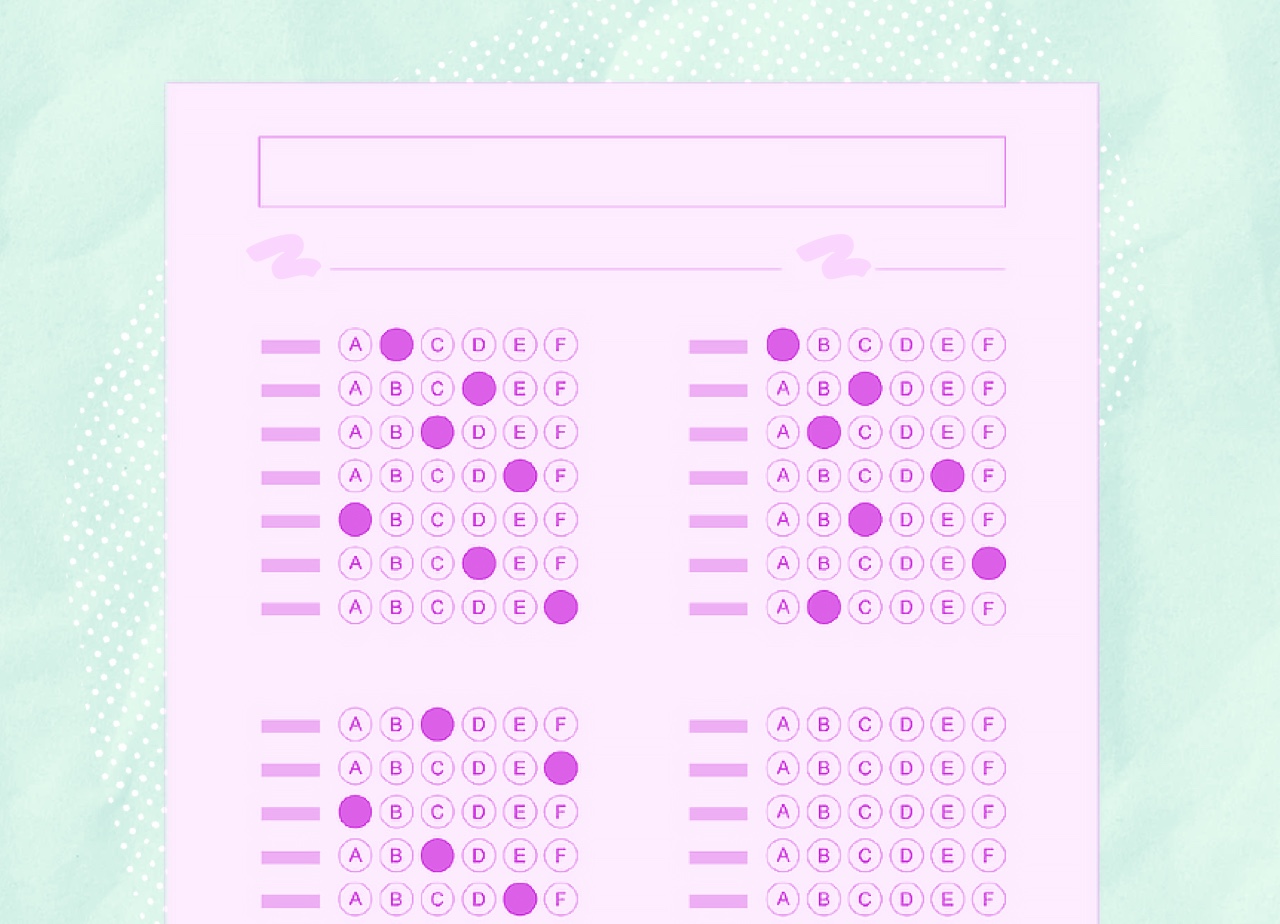Love em’ or hate em’, but nearly every standardized exam uses multiple choice questions to measure your knowledge. That’s why it’s important to familiarize yourself with some strategies that can help you avoid confusion and missed questions. Here are some multiple choice taking strategies, along with some myths and misconceptions to be aware of.
4 Strategies for test day
1. Qualifiers and modifiers
While reading the question, look for qualifiers and modifiers that can change the meaning of the question. The correct answer to a question can change depending on a qualifier or modifier, such as ‘always’, ‘sometimes’, or ‘except’. Circle these key words so they stand out to you as you think about the question.
Fully read the questions multiple times and circle key words before even reading your answer choices. By skimming a question and seeing an answer that stands out as correct, you may immediately answer the question without fully understanding the context. That can lead to costly and unnecessary mistakes.

2. Answer in your own words
After you carefully read the question, answer the question in your own words before even looking at the answer options. This gives you an opportunity to ‘eliminate’ answers before seeing them and avoid any confusion, which leads to less mistakes made.
3. Eliminate incorrect answers
One of the keys to success with multiple choice exams is to eliminate incorrect answers. When you get to your answer options, one of the first things you want to do is eliminate anything that stands out as obviously wrong.
After that, go through a second time and pick out the answers that seem the most plausible. Reread the question and take note of any qualifiers again, look at your answers and see which may not take those qualifiers into account and eliminate them. You should be left with one or two answers to choose from.
In cases where multiple answers seem equally plausible, think about skipping it and coming back to the question later, or trust your gut instinct on which seems like the correct answer.
4. Manage your time
Time can fly by when taking an exam, so it’s important to manage your time wisely and be cognizant of your time spent on each question. If you’re stuck on a question, skip it and come back to it at the end of your exam if you have some extra time left.

It varies from test to test, but generally, you want to spend no more than two minutes on a single question. Once you approach this mark, figure out if you’re better off with an educated guess on the answer or skipping and revisiting it later. Sometimes questions and material later on in the exam can give you hints to the correct answer for a question you’re stuck on.
3 Myths to remember
1. Myth: exams have trick questions that will try to fool you
Trick questions on a multiple choice exam are pretty rare. You may come across the odd instructor who is really out to get you, but for the most part you won’t find any trick questions on standardized exams.
If you think a question is trying to trick you, you may just be overthinking. The simplest questions usually are seen as “trick” questions because you think “it can’t be THIS easy, right?”. Well, it probably is that easy. Pick the best answer and move on.
2. Myth: you can outsmart an exam by taking advantage of randomized patterns
No… but kind of? I’m sure you’ve heard this at some point “if you don’t know the answer, always guess C. because it’s the most common correct option”. That’s just a myth, and generally there are no most common answers on multiple choice tests.
But some research done by William Poundstone for his book “Rock Breaks Scissors: A Practical Guide to Outguessing and Outwitting Almost Everybody” found some interesting tidbits, like that “none of the above” responses were correct 52% of the time based on the limited sampled data. That doesn’t mean you should be trying to “trick” your exam though. Thorough knowledge of the material will always give you the best opportunity to get the answers correct.
3. Myth: stick with your gut and don’t change your answers
You may be surprised to learn that numerous studies have found that this is actually wrong. A study from the 80’s found that on average, those who changed their answers rather than sticking with their gut scored higher on their exams.
People tend to stick with their gut instinct because it feels worse to get a question wrong outright, than to get a question wrong that you had originally answered correctly. The intense feeling of “what if?” after seeing an incorrect answer that was originally correct influences us on exam day. Psychologist Justin Kruger calls this the First Instinct Fallacy. So if you find a question you believe you answered incorrectly, go ahead and change it.
Get familiar with multiple choice
If you’re taking an exam in the near or distant future, multiple choice questions will likely be part of it. Get comfortable with how these questions are structured and what you can do to efficiently navigate them.

 learning science
learning science